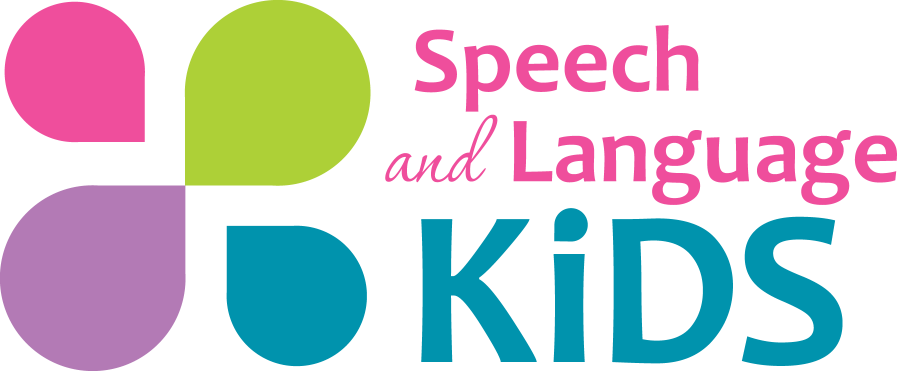Social Stories for Speech Therapy:
Examples and How to Use
Social stories are simple stories that help a child learn a new skill or understand what’s going to happen.
These are a handy and versatile tool that we can use in speech/language therapy and also at home as parents. They can walk a child through just about any skill or experience that they need to know about. And they’re written in kid-friendly, positive language so they are engaging to the child.
On this page, we’ll explain social stories and how they can be used in speech therapy. We’ll also give you some real-life examples and some guidance on how to introduce them to a child.
Social Stories for Speech Therapy Example:
Let’s say your child needs to go to the doctor but he’s feeling anxious. A social story would walk the child through what will happen at the doctor from the child’s perspective. So it might start with “When I get to the doctor’s office, I will sit down in the waiting room and wait for my turn. I may need to wear a mask if the doctor asks me to. I can read a book or play a quiet game while I wait for my turn.”
The story would then go on to describe everything that will happen. The social story may even include pictures of the child in that actual scenario, or generic pictures of other children doing the actions.
How Do We Use Social Stories in Speech Therapy?
Social stories are particularly great for teaching a child social skills or expected behaviors in a certain situation. But we can really use these when trying to change any type of behavior in a child. These are especially helpful for younger children or children who may not be able to just sit down with you and have a conversation about how something should be done.
Examples of Skills for Social Stories:
- Responding to Greetings
- Initiating play with others
- How to respond if someone does something you don’t like
- How to ask for a turn with something
- How to use words to ask for a break or to stop an activity
- How to speak clearly and loudly so people can understand you
- How to use good vocal hygiene and avoid vocally abusive behaviors
- How to remember to use the correct tongue placement for swallowing (tongue thrust)
- Eliminating pacifier use or thumb sucking
Video Explanation of Social Stories Speech Therapy:
This video shows how and when to use social stories for children with speech and language delays. Plus, how to create and story and how to use it to help change a child’s behavior or skills:
How to Create a Social Story:
1. Write out the Steps
Think through the skill you want to teach. What are the steps to completing that skill or activity? Write them all out one by one. For example, here would be the steps for asking to join someone’s play.
- Walk up to a friend or group of friends. Get close to them.
- Say, hi. Tell them your name if you don’t know them
- Ask “can I play?”
- If they say yes, do what they are doing or ask what you can do
- If they say no, say “no problem” and find something else to do
2. Take (or Find) Pictures of the Child Doing those Steps
The best part about making your own social story is that you can customize it to include pictures of the child you’re working with. When children see themselves doing something, they’re more likely to understand and follow through with that action. You may have to stage these pictures but try to find a way to take a picture of the child doing each of these steps. Think about if there are other children in your school or in the child’s life that you could have help you with a photo shoot. The child doesn’t have to actually do the whole skill from start to finish, they just need to look like they’re doing it.
For example, for the first step above, you could take a picture of your child standing near to another child (to show the distance). Then you could take a picture of your child waving at the other child. You can see how just taking these simple pictures will help give a visual aid for the story you’re going to tell.
If you can’t get pictures of the child you’re working with, you can always substitute with general pictures that you find online. Google image search is a great place to start. The Boardmaker software is also great for this as they have generic drawings of people doing a lot of different things.
3. Put the Pictures on Pages of a Document
Open up any writing software, like Microsoft word, Publisher, or Google Pages. You’ll put one picture on each page and the text will go below it. See the next step for the actual text.
4. Add Text (Use Positive “I…” Statements)
Now it’s time to add the text! This can be the hardest part so be patient with yourself until this comes more naturally. You’ll write the story from the child’s perspective and you’ll use positive statements (what you want the child TO do, not what you want them to stop doing).
For example, your story for asking to join play might sound like this:
- My name is Johnny and I love to play with my friends. When I see a friend I want to play with, I can ask to join.
- First, I walk up to my friend and get close.
- Next, I say “hi”. If I don’t know this friend yet, I can say “I’m Johnny”.
- Then, I ask “Can I play?”
- If my friend says yes, I can do what my friend is doing. If I’m not sure what to do, I can say “What should I do?”
- Sometimes my friend won’t want to play with me right now. My friend might say that they don’t want to play with me. That’s OK! I know I can play with that friend another time. I can say “No problem” and find something else to do.
Try to think through any problems that might come up during that interaction and provide appropriate responses (like the friend not wanting to play. Also, remember to avoid telling them what NOT to do, because sometimes children won’t really understand the “not” part and will do what is pictured or talked about. For example, instead of saying “I don’t bite”, you could say “If I’m mad at my friend, I can say ‘STOP’ and then I can walk away.” Always tell them what you DO want them to do.
5. Print and Read with the Child
That’s it! You did it! Now you can print out your book. I like to laminate mine and bind them together with a binder ring. But you can also just staple the paper books together, they just won’t last as long. Read the book with the child during a time when he/she is calm and happy. Then, read it again right before the child is about to engage in that activity or event. You can also get the book out as a reminder if the child is struggling with that interaction or skill.

About the Author: Carrie Clark, MA CCC-SLP
Hi, I’m Carrie! I’m a speech-language pathologist from Columbia, Missouri, USA. I’ve worked with children and teenagers of all ages in schools, preschools, and even my own private practice. I love digging through the research on speech and language topics and breaking it down into step-by-step plans for my followers.
Connect with Me:




Leave A Comment